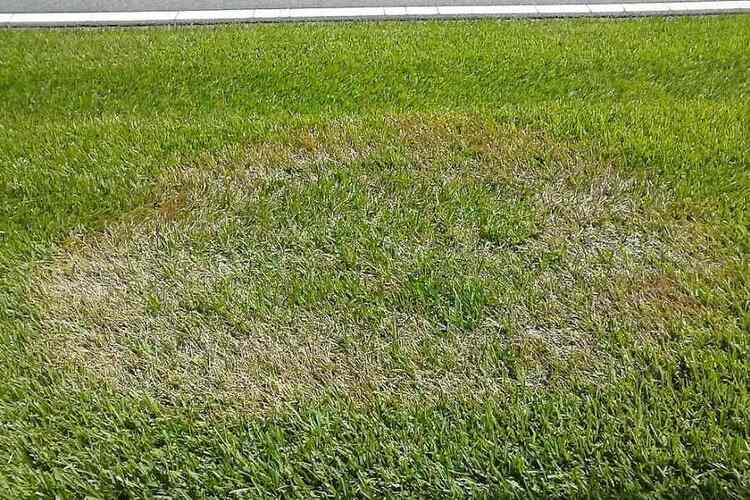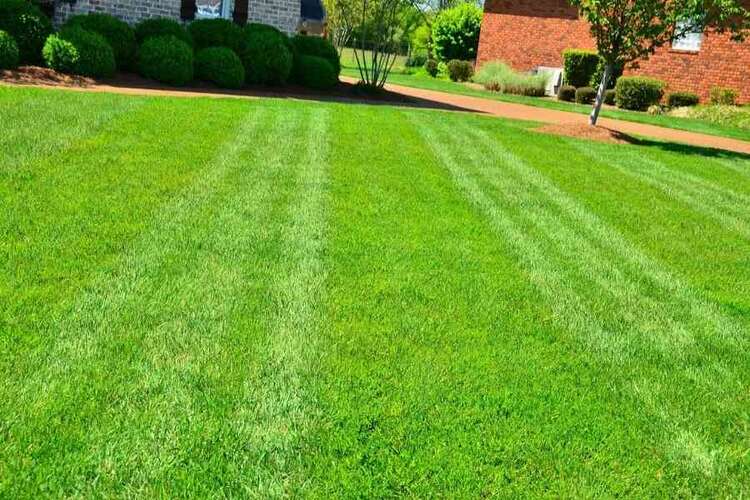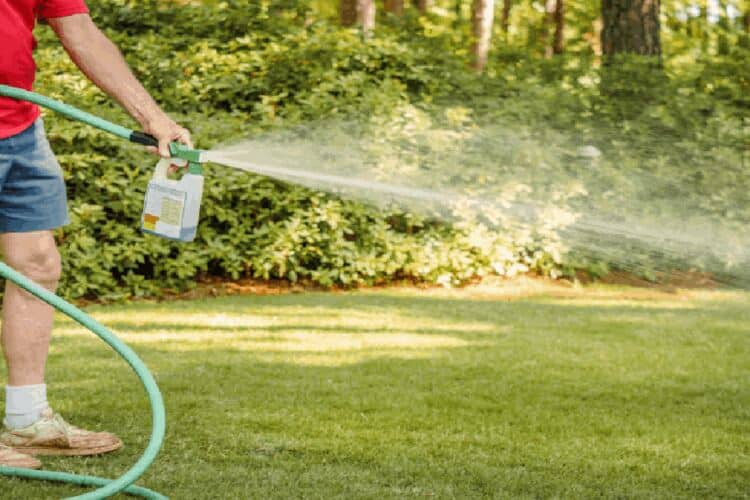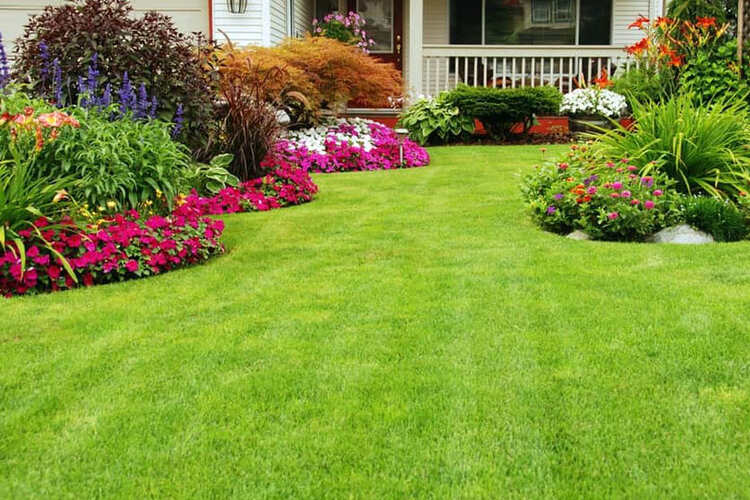Can Bermuda Grass Grow In Shade? Click For The Answer
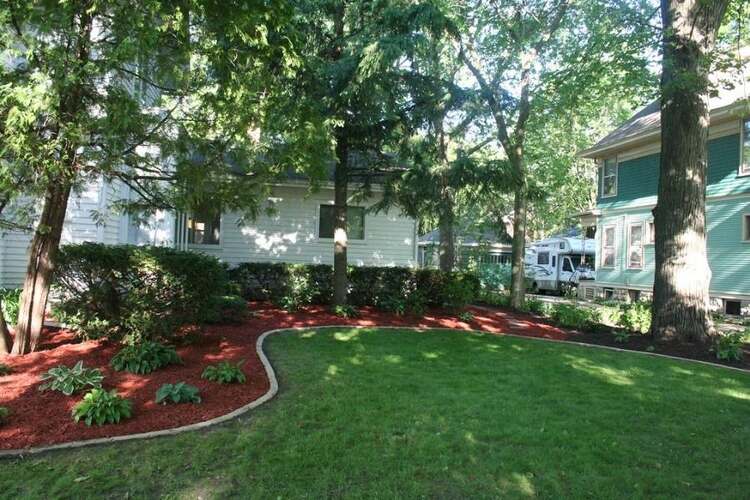
Can Bermuda grass grow in the shade? The short answer is no! It doesn’t like being in the shade. To develop into a dense, lush lawn, it needs the maximum number of hours of direct sunlight. If you still want to grow it in the shade, you should consider many things. If you are curious about the in-depth explanations, it’s time to dive into this article to discover them in detail. Let’s get started!
Can Bermuda Grass Grow In Shade?
No. Bermuda grass cannot grow well in shaded or low-light locations. This is a warm-season grass known for its ability to withstand high temperatures, dryness, and salinity. Most importantly, it can recover from damage more quickly than other grasses.
Bermuda grass is best planted in late spring or early summer for optimal growth. It’s an exceptionally quick, wide-spreading grass that spreads through runners above and underneath the ground. The blades have a coarse to moderate texture and are pretty broad, resulting in a lush, green turf bed. Like most warm-season grass species, Bermuda thrives in the warm months and then stays inactive in the colder months, turning from greenish to brownish.
Bermuda grass may go dormant in cold weather and may not survive freezing temperatures in the Deep South. Most Bermuda types are suited for plant hardiness zones ranging from 7 to 10 on the USDA Cold Hardiness map. Although it is primarily a warm-season turf type, several cultivars can develop in the transition region.
Bermuda comes in two main types: Seeded grass and Hybrid grass. They have a wide range of varieties, such as:
- Blackjack
- Ormond
- Jackpot
- Yuma
- Oasis blend
- La Prima
- Sahara
- Princess 77
- Yukon
Why Does It Detest Being Planted In The Shade?
Light is essential for all plants, including Bermuda, to thrive. In other words, this turf requires photosynthesis. It is the process through which the grass absorbs the sun’s energy and converts it to carbohydrates and sugars. In the simplest terms, its life is based on the energy it generates, which it converts from sunlight.
If you grow your turf in shady places, you feed it a diet. It doesn’t matter how much plant food you provide. If it can’t get enough light, it won’t be able to develop. That’s because it can’t turn this thing into energy through photosynthesis. Furthermore, turfgrasses like Bermuda are native to Plains or Savannah ecosystems, not forest ones. Therefore, planting them in a shady setting puts them in an environment where they won’t thrive.
Bermuda grass is among the least shade-resistant types, and it will still grow in shady areas, but with a highly sluggish speed and an ugly appearance. Your garden will not acquire enough daylight when high bushes and plants are around your lawn. Furthermore, taller trees on shady Bermuda lawns dry off the turfgrass by battling for moisture content, resulting in insufficient moisture to sustain rhizome growth.
How Much Light Does Bermuda Grass Require?
Bermuda turf needs about 4 hours of bright light from the sun daily to thrive. Any reduction in exposure causes poor development, disease risk, and growth retardation. Several gardeners choose this turf due to its heat and dryness tolerance throughout the summertime. In comparison to most other turfgrasses, this one requires more light. In low-light environments, it won’t thrive. The brightness of the sunlight is also crucial, but it isn’t all. The total length of light in a day determines the growth of this turf species.
Besides, the amount of sunshine received throughout the day stimulates the development of rhizomes, leaves, and stolons. Specific cultivars are more resistant to shade tolerance or reduced sunshine exposure. They don’t do it as effectively as Ryegrass or Zoysia, though.
How do you tell if your turf doesn’t get enough light? Below are some signs to consider:
- Thinning lawn: This turf prioritises vertical growth when it receives less light because of shadowing. As a result, the yard takes on an ugly, thin look, with noticeable bare areas.
- Long stems: Poor sunlight likely causes your turf stems or shoots to seem longer than expected.
- Poor bug and disease resistance: Turfgrass can’t carry out photosynthesis as well in shady lawns when it gets less sunshine. It lacks the necessary energy to aid in disease and bug resistance.
How To Make Bermuda Grass Spread Fast?
Bermuda lawn grass proliferates if the environment is favorable. Weeds will develop everywhere around your yard when there are thin and bare places. What should you do to accelerate the spread of Bermuda grass? Below are some valuable tips:
Sow Grass Seeds Late In The Springtime
Planting grass late in the spring is ideal since it will develop and spread more quickly. You should also avoid planting in the cold season when the ground is icy and when the temperature is scorching in the summertime. To properly sow on the lawn, sprinkle the seeds all over the yard, then scrape them into the soil. Finally, water the freshly planted lawn.
Water Properly
Watering freshly seeded turf regularly is crucial because it helps the roots settle. Water your yard at least twice daily during this period. Decrease the watering intensity to once a day after the grass is roughly one inch tall.
Fertilizer Properly
The optimal time to apply liquid nitrogen fertiliser to your turf is every 6 to 8 weeks. When the dormancy season begins in early autumn, you should cease fertilizing your garden. That’s because normal grassland development will slow by that time.
When considering fertilizer, it is important to choose a product that is specifically designed for the type of grass you have. You should also follow the instructions on the label carefully to avoid over-fertilizing your lawn.
Make Sure Your Lawn Has Sunlight
Bermuda requires enough full sun or sunlight regularly to develop, spread swiftly, and cover bare areas.
Conclusion
Can Bermuda grass grow in the shade? It generally dislikes being planted in poor light conditions, but you can still find ways to grow it in shady areas. Apply some of the practical and effective measures mentioned above, like improving sunlight exposure, restoring pH balance in the soil, or fertilizing correctly.




